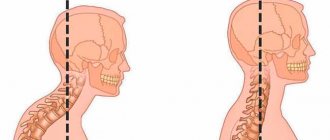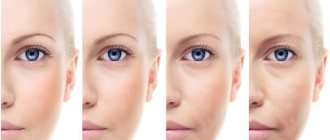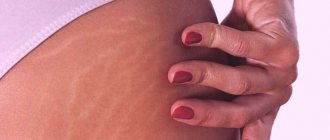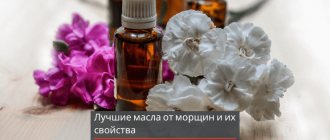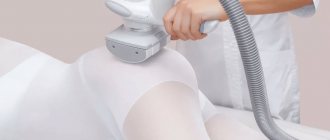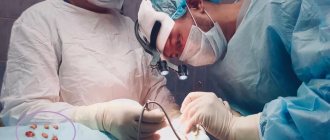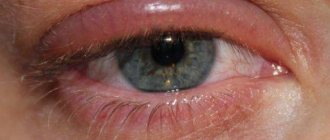Author
: Grachev Ilya Illarionovich
Editor
: Efremov Mikhail Mikhailovich
Date of publication: 08/14/2018 Date of update: 02/16/2020
The very first manifestations of psoriasis often appear on the head, then spreading throughout the body. Psoriasis on the scalp occurs with itching and the risk of bacterial complications. If you suspect the psoriatic nature of the rash, you should immediately consult a doctor - the disease is highly treatable at the very beginning. The article contains all the information about the symptoms and all known methods of treating this form of the disease.
Causes of psoriasis on the head
This is a chronic non-contagious dermatological process that develops in individuals with a hereditary predisposition. The causes of psoriasis on the scalp and the mechanism of its development are not fully understood. But it has been established that the process develops against the background of metabolic and immune disorders. The body loses control over the division of skin epithelial cells: they begin to divide much faster. Signs of keratinization also quickly appear, manifested in the form of peeling. At the same time, inflammatory processes develop in the skin.
The main cause of scalp psoriasis is a hereditary predisposition. Scientists are trying to identify the genes responsible for transmitting the disease from generation to generation. Individual altered areas related to different genes that are found in patients and their close relatives have already been identified.
But a person who has a genetic predisposition does not necessarily get sick. External and internal predisposing factors are no less important. Psoriasis of the scalp begins in genetically predisposed individuals due to exposure to the following factors:
- mechanical irritation of the skin (with a hair brush with hard teeth; injury to small wounds and crusts that appear with seborrhea, etc.);
- cold exposure;
- past infectious diseases; often after streptococcal impetigo - purulent rashes mainly on the skin of the face; develops in children and becomes the impetus for the development of an autoimmune process;
- chronic stress and high loads;
- frequent smoking, alcohol abuse;
- diet violations - irregular, unhealthy dry food, excessive consumption of high-calorie foods and spicy seasonings;
- for hormonal disorders that affect the condition of the sebaceous glands of the skin - obesity, imbalance of sex hormones, diabetes, diseases of the thyroid gland, pituitary gland, hypothalamus;
- for diseases of the liver and kidneys with impaired function of these organs; neutralization of toxins occurs in the liver, and through the kidneys they are eliminated from the body; intoxication can become a trigger point in the development of the disease.
Under the influence of one or several factors, the interaction of the organism with the environment is disrupted. Protein, fat and carbohydrate metabolism is disrupted, which causes acceleration of metabolic processes in the skin and its peeling.
Psoriasis of any localization can spread throughout the body, so do not delay treatment.
See how easily the disease can be cured in 10-12 sessions.
Changes in the immune system manifest themselves in the form of increased sensitivity of the skin to any external influences (including combing or frequent hair coloring). In response to such influences, antibodies are produced to one’s own cells, provoking the occurrence of an autoimmune inflammatory process. The reasons why inflammation begins are not yet fully understood. This is one of the priority tasks of medicine in the treatment of psoriasis.
Is it dangerous
A birthmark on the neck is a common occurrence. A newborn may be born with clear skin or may already have reddish markings. The formations have different structures and do not cause dangerous pathologies. Doctors warn about the need to monitor any skin elements. If color or size changes, you should consult a doctor; children have fragile health that is easily damaged.
Experts warn about the possibility of birthmarks degenerating into melanoma, a malignant formation. Cancer is formed due to the active division of melanocytes within the tumor. The process causes the element to increase in diameter. You can prevent degeneration if you notice the characteristic signs in time: the shape blurs, the size increases, itching, pain, and peeling appear. A pediatric dermatologist or oncologist can make an accurate diagnosis.
Malignant tumors can develop independently or transform from existing nevi. The congenital type of birthmarks is less dangerous than the acquired one.
Melanoma does not develop from hemangioma.
Symptoms of psoriasis of the scalp
Psoriasis on the scalp manifests itself in the form of characteristic symptoms. The disease can begin acutely with multiple rashes (vulgar form of psoriasis) or gradually with itching and flaking of the skin, and only then characteristic rashes appear (seborrheic form). Psoriasis on the head, photo:
The more common onset is gradual, in the form of dandruff and flaking. In the early stages, these are small areas in the occipital region. Peeling spreads to larger areas and itching begins. Constant scratching of the skin contributes to its roughening and abrasions. What does psoriasis on the scalp look like? The initial symptoms of psoriasis on the head in the photo look like this:
In the area of scratches and abrasions, redness first appears, and then small inflammatory nodules and papules, surrounded by a bright rim that rises above the surface of the skin. Accompanied by severe itching, the rashes increase in size and merge with each other. Features of the rashes are:
- white “shavings” covering the papules; when scraped, it resembles a stearic speck; in the seborrheic form, the scales have a yellowish color and the phenomenon of the stearin spot is not so pronounced;
- if you scrape off all the “chips”, a smooth translucent surface is revealed;
- further scraping leads to the appearance of droplets of blood on the surface - “blood dew”.
In the photo, three signs look like this:
These three characteristic manifestations distinguish scalp psoriasis from seborrheic dermatitis, with which it is easily confused. Subsequently, the papules merge and form psoriatic plaques, which have different configurations and sometimes spread over the entire surface of the head.
The course of scalp psoriasis can be mild with the appearance of isolated rashes at the initial stage. These rashes then go through all three stages of development. In severe forms, the rashes occupy an entire significant area and spread to the face and neck in the form of a crown - an inflammatory rim covered with silvery scales. The hair roots are not affected, but the psoriatic process is often accompanied by a bacterial, fungal or mixed infection, which leads to complications that are not so easy to cure. This is what the crown looks like, photo:
How to deal with peeling?
What to do if your scalp is flaky? If the peeling of the scalp is extensive, that is, very strong and is accompanied by redness and itching, then you need to consult a trichologist or dermatologist. A competent specialist will prescribe appropriate treatment and give you recommendations.
Here we will list the basic products and tips on how to care for your scalp in order to quickly restore its normal state. But this information is suitable if you do not have a serious illness and the symptoms are minor:
- Such a remedy as Sulsena has proven itself very well. It is available in the form of ointment, cream and shampoo. To avoid causing addiction, the product should be combined with regular shampoo that has a neutral pH.
- If peeling is the result of a fungus, then medicated shampoos containing ketoconazole, selenium disulfide and birch tar are recommended.
- Special pharmaceutical masks will help normalize the level of moisture.
- First of all, if such a problem occurs, you should change the shampoo. Choose the right shampoo for your hair type, preferably hypoallergenic.
- Strengthen your immune system in every possible way, this is especially important in the off-season.
- Normalize your diet, try to exclude salty, spicy, flour, and sweet foods from it. It's better to eat more fruits and vegetables.
- Try to leave time for rest, walk more in the fresh air.
- Buy hats made from natural, breathable materials and wash them regularly.
- If your liver is clogged, you can clean it at home - this will benefit not only the liver, but the entire body.
- Protect your hair from the cold in winter and from the sun in summer.
- In the fight against the problem of skin peeling due to vitamin deficiency, taking multivitamin complexes will help.
Stages of psoriasis on the head
The disease lasts a long time, exacerbations are replaced by remissions. The frequency of exacerbations and the severity of symptoms depend on the presence of provoking factors.
Progressive stage
Rash and inflammation spread, accompanied by severe itching. In the initial stage, Koebner's symptom is present - the appearance of psoriatic rashes at the site of scratches and abrasions.
Stationary
The process is in the same state, not spreading, but not dying out.
Regressive
The process gradually subsides, the itching disappears, the rash turns pale, the inflammatory infiltrate decreases, gradually taking on the appearance of a spot; the color of the rash fades starting from the center, forming ring-shaped figures with a brighter border. Sometimes they begin to turn pale from the periphery to the center and then take on the appearance of whitish rings (a symptom of psoriasis on the head - Voronov's pseudoatrophy). The healing phase can take quite a long time and gradually only white depigmented spots remain on the skin.
Treatment methods for psoriasis on the scalp
Good to know
- Treatment of psoriasis on the elbows
- Treatment of psoriasis on the legs
- Treatment of psoriasis on nails
- Treatment of psoriasis on the hands
- Treatment of psoriasis on the face
- Treatment of palmoplantar psoriasis
Scalp psoriasis requires systematic treatment under the supervision of a physician. An active lifestyle, quitting smoking and alcohol, and following a diet are of decisive importance. The disease must be treated comprehensively, using methods taking into account the characteristics of the patient’s body. Complex therapy can include modern European techniques, drug treatment, as well as time-tested oriental methods. Such treatment can immediately significantly improve the patient’s condition and lead to the development of stable remission within a few weeks.
PRP therapy is a method based on the ability of platelets (red blood platelets) to secrete a growth factor that stimulates the regenerative abilities of cells. By centrifugation, the patient's blood is enriched with platelets and then precisely injected into the scalp. The technique allows you to significantly accelerate the onset of remission and prevent the development of relapses.
Autohemotherapy - treatment is carried out by intramuscular injection of a small amount of blood taken from the patient’s vein. This has a general stimulating effect and restores the epithelium of the head. After treatment, stable remission is observed.
Reflexology is the effect of various methods on special points on the body that are reflexively associated with organs and tissues. One of the most ancient and effective traditional methods of treatment. The points can be affected by acupuncture (acupuncture), moxibustion, massage, etc. Treatment of scalp psoriasis with these methods has been practiced in Eastern medicine for thousands of years. Therapeutic procedures are performed by a reflexologist.
Vacuum therapy - exposure to rarefied air on biologically active points - is one of the methods of reflexology. It can be carried out using cans or special equipment. Promotes rapid restoration of damaged tissues. As a result of the use of vacuum therapy, the affected areas are significantly reduced.
Herbal medicine - dermatologists widely use medicinal plants in their practice in the form of infusions, decoctions and ready-made pharmaceutical forms. When used correctly as part of complex treatment, they are very effective both in the initial stages of the disease and in its long-term forms. If you add herbal medicine, the effectiveness of other treatment methods increases and the risk of developing undesirable drug effects decreases.
Red spots on the skin after stress
Diagnosis of skin diseases
We also recommend reading
Pigmentation of the labia
Causes of birthmarks and their types
10 types of pigmented nevi
Rules for removing moles with celandine
No comments yet
OneTwoSlim – drops for weight loss
Onetwoslim is an ideal comprehensive weight loss system designed taking into account human biorhythms.
990 rub. More details
Intoxic – a reliable remedy for parasites!
Intoxic – cleanses of parasites in 1 course! Heals and protects the liver, heart, lungs, stomach, skin from parasites. Eliminates rotting in the intestines, neutralizes parasite eggs thanks to bear bile
990 rub. More details
Breast enlargement gel Le Bustier
Le Bustier - a unique gel will give your breasts a seductive volume, make their shape more rounded and toned, and give firmness and elasticity to the skin in the décolleté area.
990 rub. More details
Treatment of psoriasis on the head at the Paramita clinic
At the Paramita clinic in Moscow, this disease is treated by dermatologists who have training and clinical experience in treating this disease with all currently known methods. In their work, they use new Western methods of drug treatment in combination with traditional Eastern techniques, which were successfully used by doctors of Ancient China and Tibet for thousands of years.
To avoid relapses, it is necessary to eliminate the cause of the disease.
Read more about our unique method of treating psoriasis
“Paramita” is a leader in the treatment of psoriatic processes in Moscow in a variety of ways with an individual approach to each patient. Several sets of traditional methods in combination with drug treatment can permanently relieve the patient of problems with the scalp.
The effectiveness of treatment at the clinic is noted in their comments and reviews not only by patients who regularly receive maintenance treatment, but also by colleagues from other Moscow clinics.
Sign up for a free initial appointment
Prevention of psoriasis on the head
Prevention of psoriasis on the scalp is especially necessary for people with a hereditary predisposition who have sick relatives. It includes eliminating the impact of the following factors:
- any prolonged exposure to the skin;
- poor nutrition and sedentary lifestyle;
- prolonged stress and heavy loads;
- smoking and alcohol abuse;
- hormonal disorders - if you suspect such disorders, you should immediately contact an endocrinologist;
- intoxications - promptly treat all chronic diseases that contribute to metabolic and immune disorders.
A dermatologist after an examination can tell you how to cure psoriasis on the scalp. Therefore, you should not delay consulting a specialist, because the initial stages of the disease are much easier to treat. Can this process be cured? It is impossible to cure the disease completely, but if a person is treated regularly, there is a great chance of getting rid of relapses for a long time.
Types of hyperkeratosis
Hyperkeratosis can be hereditary or acquired. Depending on the clinical manifestations, the disease is divided into the following types:
- follicular (lichen pilaris, appears more often in childhood on the scalp);
- lenticular (mainly on the skin of the extremities, thighs, ears);
- diffuse (more often appears in childhood on the extensor surface of the arms and legs, on the back);
- seborrheic (affects the scalp);
- disseminated (distributed over the entire surface of the skin);
- warty (single lesion on an open area of the body).
Dermatologists tend to call hyperkeratosis not an independent disease, but a consequence of systemic disorders, so treatment of the scalp and other areas should not be symptomatic, but comprehensive.
Diet for scalp psoriasis?
There is no special diet, but treatment of psoriasis of the scalp involves proper 4 meals a day containing all the ingredients necessary for the body. Products that irritate the skin should not be present on the table:
- spicy, salty, sour;
- fruits rich in essential oils (fresh garlic and onions, radishes);
- fried, smoked, canned foods;
- caffeine-containing drinks – strong tea, coffee, Coca-Cola, etc.;
- alcoholic drinks – they contribute to the development of relapses of the disease.
It has been established that meat foods provoke an exacerbation, so the diet should contain more foods containing complex carbohydrates, lean meat, cottage cheese, yogurt, etc.
Traditional methods
As we mentioned earlier, doing it on your own instead of treatment will not bring any benefit, and may also provoke an allergic response from the body.
So the use of the described methods of traditional medicine against redness on the head of various etiologies is possible only as additional measures to the main treatment.
Dried marigold and plantain flowers are infused in boiled water, wiped over the head with the liquid, and do not rinse off.
Also, fresh leaves and stems of flowering celandine are ground and squeezed. Juice from 300 g of raw material is mixed with 30 g of dry red wine. Apply the mixture to irritated areas before going to bed and leave for a quarter of an hour.
The condition of the integument is facilitated by applying gauze soaked in salvia tincture (ten grams of leaves per 300 ml of boiled water, then add honey).
Olive oil is good for dry skin. It is rubbed into the head and covered. After an hour, wash your hair with a moisturizer.
Tinctures made from burdock and yellow rhizomes, St. John's wort, are effective in combating redness of the scalp.
The following recipes may also provide relief:
- mask made from castor oil, alcohol and tea; from fatty kefir half an hour before washing;
- rubbing the skin with apple cider vinegar 1 hour before washing;
- 1 tbsp. l. honey, sour cream, cognac and egg yolk are mixed and kept on the hair under a film for a couple of hours;
- white and blue clay soothes the sebaceous glands;
- all kinds of essential oils;
- sea salt removes dead cells well;
- Mustard makes hair soft and softens skin.
Drug therapy for scalp psoriasis?
Medicines are selected according to the patient’s condition and the presence of certain symptoms of the disease. In the initial stage of psoriasis on the scalp, the following external remedies are used:
- when weeping, solutions and creams are prescribed that eliminate these symptoms and prevent bacterial and fungal infections; Picladol, Psorilom, Zinocap creams are suitable; Belosalik is prescribed from solutions; apply the medicine to the affected skin areas every day;
- if the skin is dry, then it is treated with ointments; ointment with salicylic acid - has a softening effect; ointments with tar have the same effect; Ointments with zinc and Daivonex ointment (an analogue of vitamin D3 + glucocorticoid betamethasone - help quickly eliminate the symptoms of psoriasis);
- ointments and creams with corticosteroid hormones are prescribed for the treatment of common forms of psoriasis on the scalp;
- Shampoos are widely used; Thus, tar shampoos (Psorilom, Friederm Tar, etc.) relieve inflammation and soften crusts; shampoo with zinc has an antiseptic and softening effect, relieves inflammation; shampoos are used for a long time.
Moisturizing masks at home
We'll tell you how to use folk remedies to moisturize your skin when it's peeling. The following masks are most effective.
From curdled milk
The curdled milk is heated to a temperature of 37°C. Then apply to hair and rub in thoroughly. The head is wrapped in parchment paper, and a warm scarf or towel is put on top.
It is important to keep warm inside. Leave for half an hour. Then apply yogurt again for 5 minutes and massage the skin with your fingertips. Next, the head is washed with water without shampoo. Effect: moisturizing, protecting the surface of the skin and bulbs from delamination and damage
Effect: moisturizing, protecting the surface of the skin and bulbs from delamination and damage.
Glycerin
- Mix a teaspoon of glycerin.
- 1 teaspoon lemon juice or apple cider vinegar.
- 2 tablespoons of castor oil and 1 yolk.
- Apply the mixture to the head, cover with a plastic cap, and wrap a towel on top.
- After half an hour, wash it off.
Effect: active hydration.

